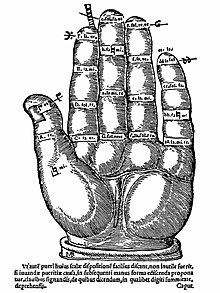Johann Zanger the Elder
Johann Zanger the Elder (born November 1517 in Innsbruck ; † April 5, 1587 in Braunschweig ) was a German music theorist , lawyer and Lutheran theologian.
Life
Johann Zanger was born in Innsbruck in 1517. He received his first musical training from his parents. From 1523 to 1526 he was a treble singer under Thomas Stoltzer († 1526) in the court orchestra of King Ludwig II of Bohemia and Hungary († 1526) in Buda . As a result of the devastating defeat of the Hungarian army against the Ottomans in the Battle of Mohács , Zanger fled to Vienna with members of the court orchestra in 1527 . The ten-year-old Zanger also performed as a singer in the court orchestra of the new Hungarian king, the Habsburg Ferdinand I. In Vienna he received music theory lessons from Hofkapellmeister Heinrich Finck († 1527) and his successor Arnold von Bruck . Zanger studied in Vienna from 1536 to 1540 jurisprudence as imperial scholarship . He continued his legal studies in Cologne and Prague before moving to Wittenberg in 1542 .
After his conversion to the Protestant faith, he studied Protestant theology at the University of Wittenberg . In 1545 Zanger went to Braunschweig, where he worked at the two Latin schools , first as cantor at the Martineum and from 1548 as rector at the Katharineum . In 1553 he received a pastor's post at the Petrikirche . In 1571 he moved to the Martinikirche as pastor . In 1577 he was deputy of the city superintendent and in 1586 dean of St. Matthew's monastery . Zanger died in April 1587 at the age of 70 in Braunschweig.
Zanger published numerous theological writings, including translations of treatises by his highest employer Martin Chemnitz into German and Latin. His most important publication is his music theoretical work Practicae musicae praecepta , published in Leipzig in 1554 . This textbook for music lessons, in which Zanger's experiences from his apprenticeship at the Viennese court flowed, found distribution throughout Europe. We owe the pressure mapping the common today Notenhandschrift Guido of Arezzo , which developed around the year 1000 the forerunner of today's musical notation.
Fonts (selection)
- Practicae musicae praecepta , Leipzig 1554. ( digitized version )
literature
- Rainer Boestfleisch : Zanger, Johann . In: Horst-Rüdiger Jarck , Dieter Lent et al. (Ed.): Braunschweigisches Biographisches Lexikon - 8th to 18th century . Appelhans Verlag, Braunschweig 2006, ISBN 3-937664-46-7 , p. 754 .
Individual evidence
- ^ Steffen Tiggeler : Music and Theater . In: Horst-Rüdiger Jarck , Gerhard Schildt (ed.): The Braunschweigische Landesgeschichte. A region looking back over the millennia . 2nd Edition. Appelhans Verlag, Braunschweig 2001, ISBN 3-930292-28-9 , pp. 629-630 .
| personal data | |
|---|---|
| SURNAME | Zanger, Johann the Elder |
| BRIEF DESCRIPTION | German music theorist, lawyer and Lutheran theologian |
| DATE OF BIRTH | November 1517 |
| PLACE OF BIRTH | innsbruck |
| DATE OF DEATH | April 5, 1587 |
| Place of death | Braunschweig |
